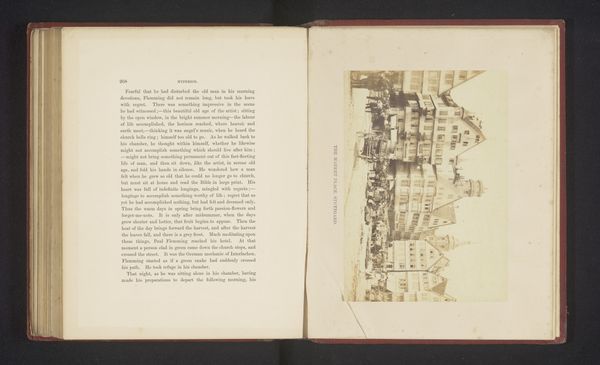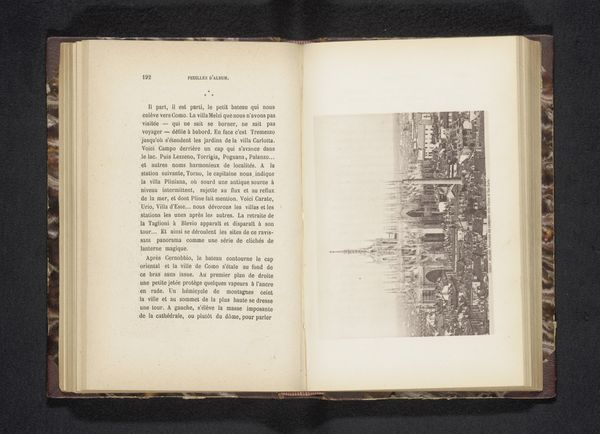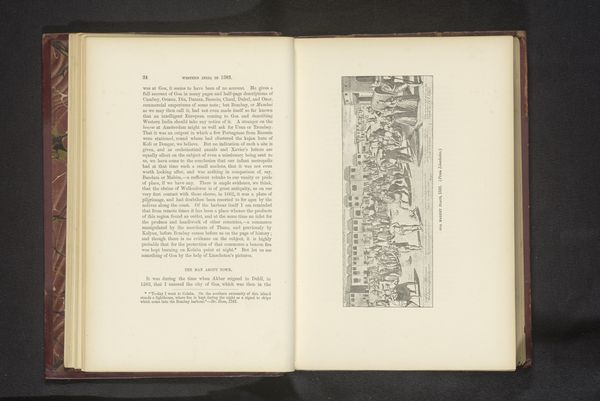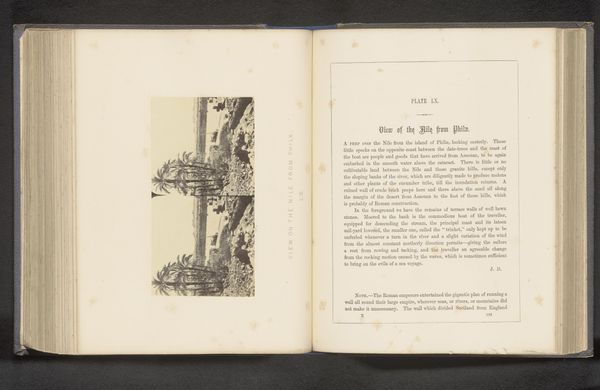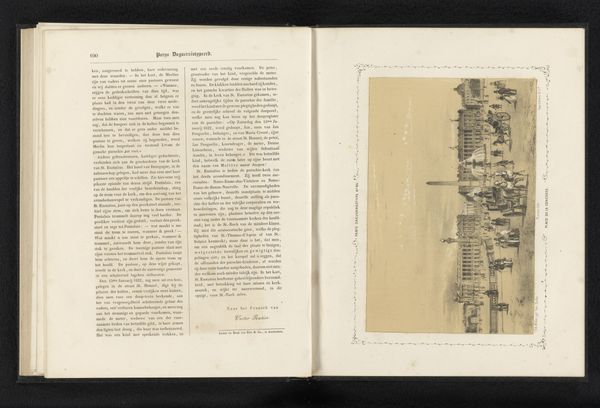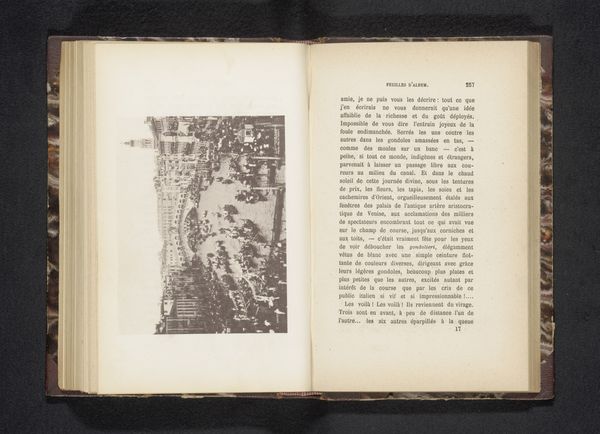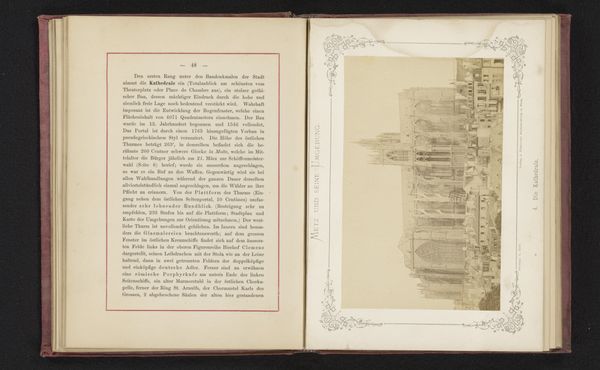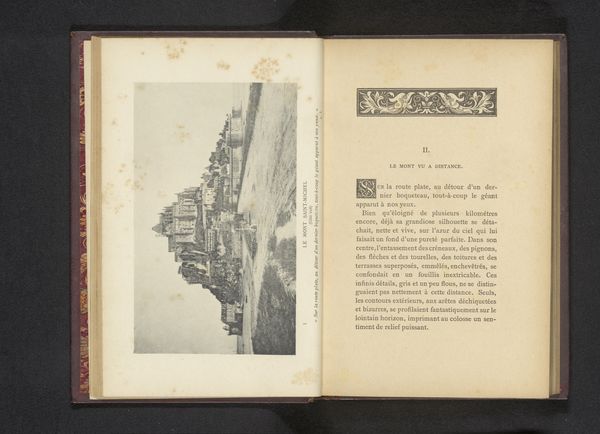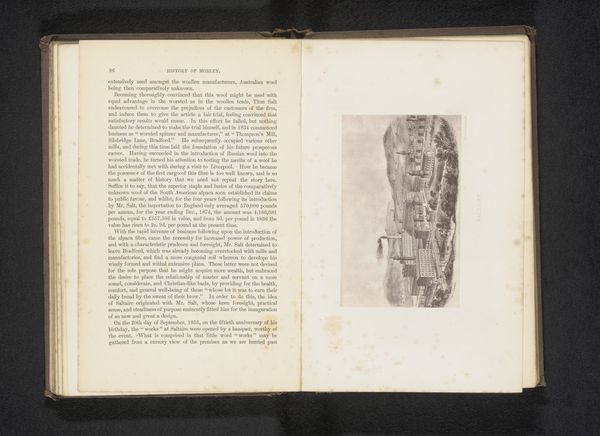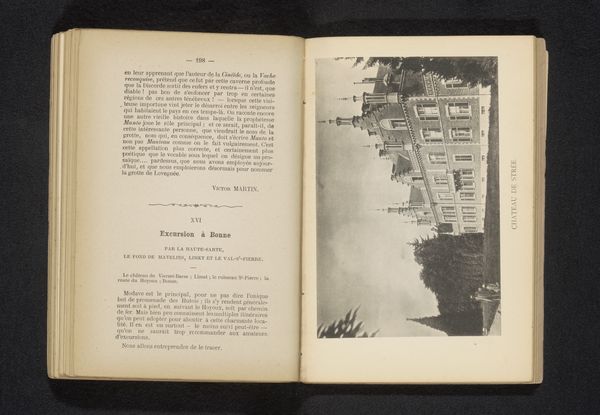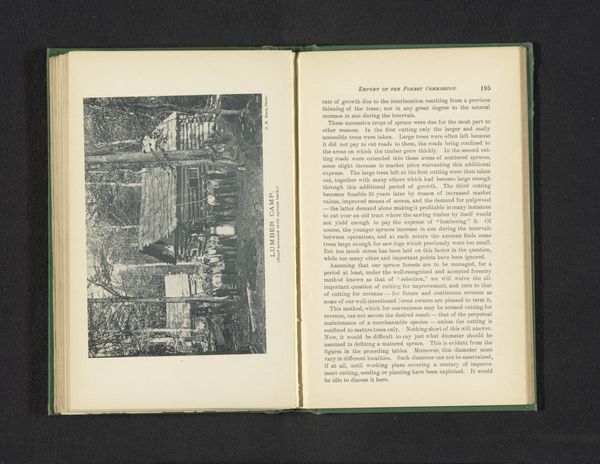
print, photography
# print
#
photography
#
cityscape
#
realism
Dimensions: height 99 mm, width 134 mm
Copyright: Rijks Museum: Open Domain
Curator: Here we have "Gezicht op het Piazza dell' Erbe," which translates to "View of the Piazza dell' Erbe," an anonymous print dating from before 1889. It seems to be an illustration within a book. What are your first impressions? Editor: It’s a melancholic cityscape. There's a muted quality to it; a ghostly, ethereal vibe permeates the architecture, doesn't it? And the perspective is rather interesting, almost tilting downwards. It creates this disorienting, yet fascinating sense of place. Curator: Absolutely. As a print, likely mass-produced as part of a travelogue or similar publication, it was designed for consumption and dissemination of visual information on a broad scale. Consider the socio-economic context: the Piazza dell' Erbe, as a vital public square, symbolizes the city’s economic and political life. Replicated, transported, and sold, such images would have played a role in constructing collective memories and circulating particular narratives. Editor: It makes me wonder about the experience of physically being in the Piazza versus seeing it mediated through this print. Is it an accurate representation, or is there a layer of artistic interpretation? I imagine strolling through that piazza, absorbing the aromas of the market, hearing the hubbub of daily life, contrasting sharply with this still, monochrome snapshot. The original intent versus the lingering affect...it's a dialogue, isn't it? Curator: The act of reproduction and the shift to photography altered understandings of time and reality. Prints made images mobile, shaping notions of progress and empire. Also, it makes you think about the labor behind the print production. Editor: Yes, absolutely. What I’m getting from this anonymous photograph is, like much art from the period, caught between realism and romanticism... it stirs something quietly nostalgic inside, for an age I never lived. A lost Veronese dream caught within the leaves of an old book. Curator: So we see, examining its materiality provides insight not only into its production but its function in disseminating views, culture, and, frankly, biases about the world in an age of immense societal change. Editor: And I find myself drawn back to the raw emotionality of what still is just a picture, still able to prompt in us the ability to weave histories for those distant others depicted there.
Comments
No comments
Be the first to comment and join the conversation on the ultimate creative platform.
